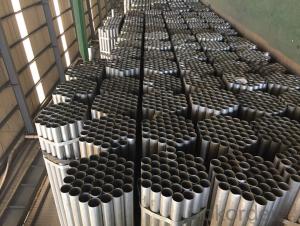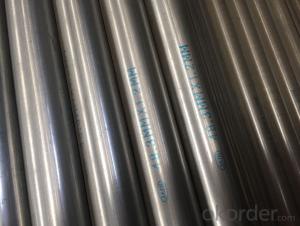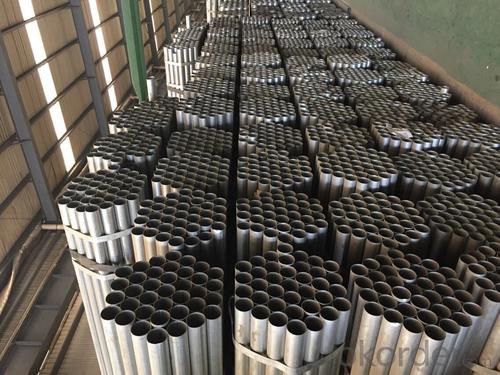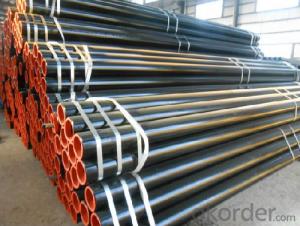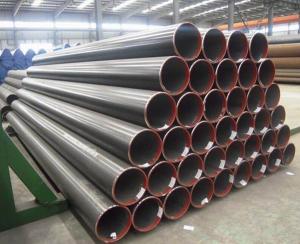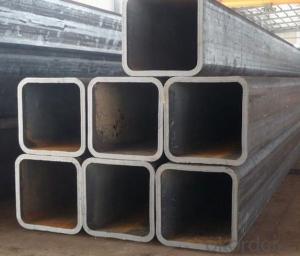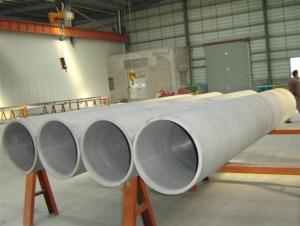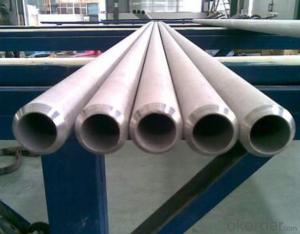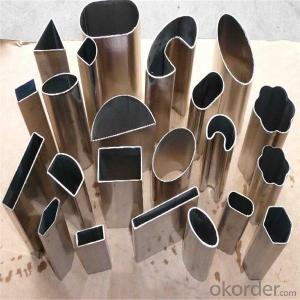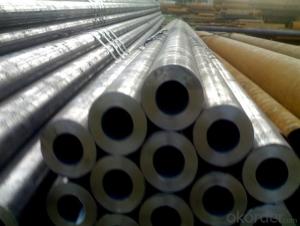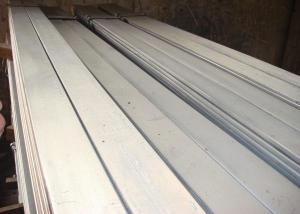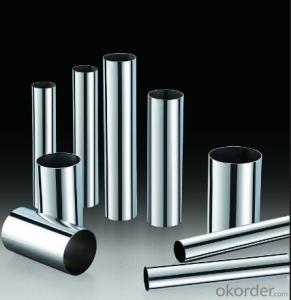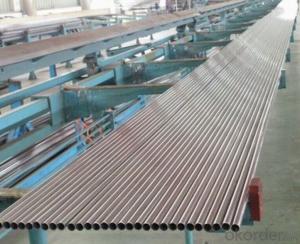Various types of stainless steel pipe waiting for you
- Loading Port:
- Tianjin
- Payment Terms:
- TT OR LC
- Min Order Qty:
- 30 m.t.
- Supply Capability:
- 8000 m.t./month
OKorder Service Pledge
OKorder Financial Service
You Might Also Like
Product Description:
1、Structure of Stainless Steel Welded Pipe ASTM A358/A312/A778 Description:
Stainless steel welded pipe is actually a cover term, covering a wide range of alloy and making them suitable for different attributes that are used in a very wide and large numbers of different industries. Stainless steel pipe is resistant to erosion, highly flexible, powerful, easy to use, and can be done in distinct approaches, which means that more and more stainless steel was used as a construction material for large-scale, high impact buildings. It can be molded, rolling, and it can create amazing shapes to make it perfect, It is used as experimental buildings, The use of steel pipe welding of large stainless steel covers other examples.
2、Main Features of the Stainless Steel Welded Pipe ASTM A358/A312/A778:
• High manufacturing accuracy
• High strength
• Small inertia resistance
• Strong heat dissipation ability
• Good visual effect
•Reasonable price
3、Stainless Steel Welded Pipe ASTM A358/A312/A778 Images:
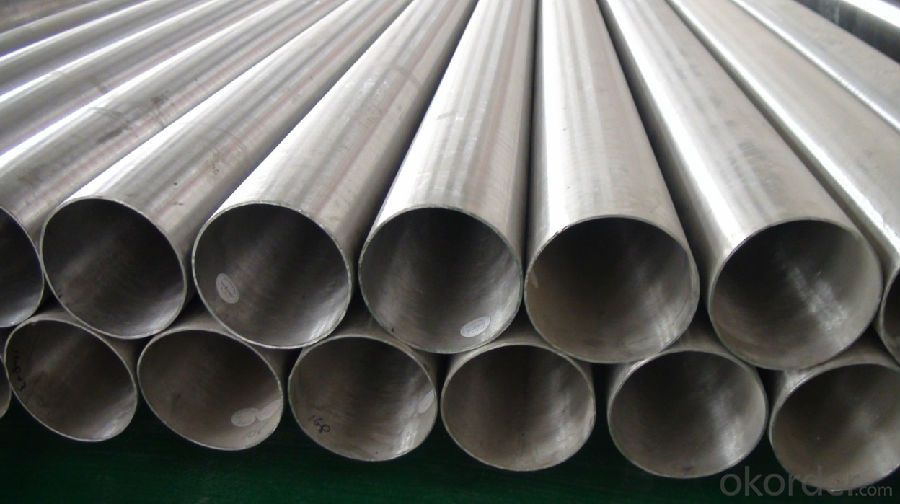
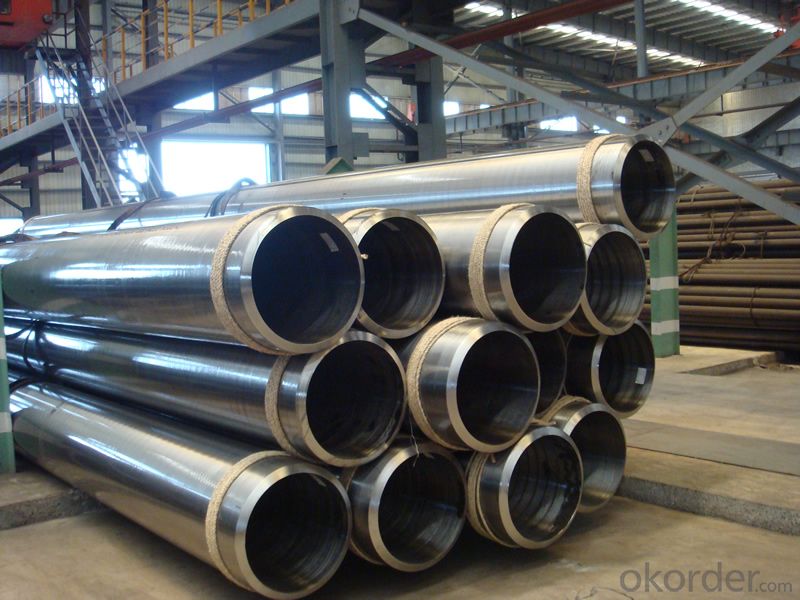
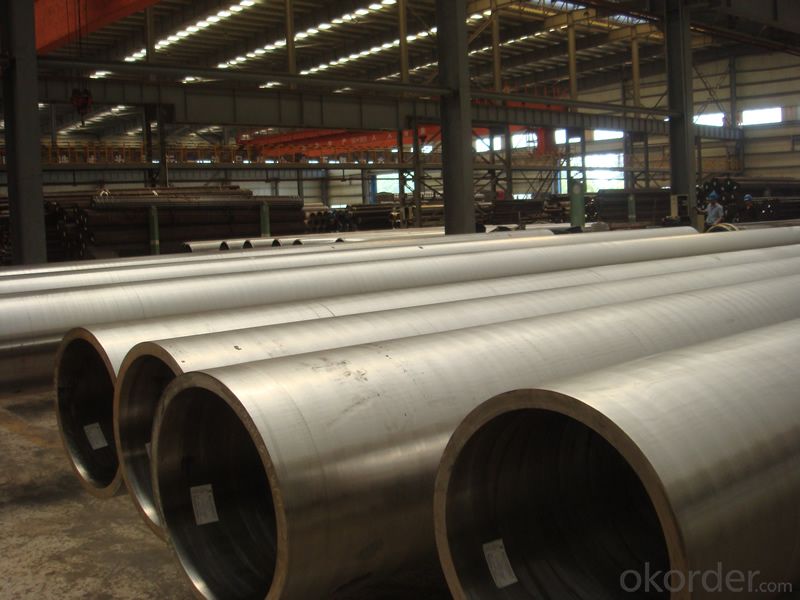
4、Stainless Steel Welded Pipe ASTM A358/A312/A778 Specification:
Size:
| Outside diameter | Outside | Thickness | ||||
| SCH 5S | SCH 10S | SCH 20S | SCH 40S | |||
| (A) | (B) | mm | mm | mm | mm | mm |
| 350 | 14′ | 355.6 | 3.96 | 4.78 | 7.92 | 11.13 |
| 400 | 16′ | 406.4 | 4.19 | 4.78 | 7.92 | 12.7 |
| 450 | 18′ | 457.2 | 4.19 | 4.78 | 7.92 | 14.27 |
| 500 | 20′ | 508.0 | 4.78 | 5.54 | 9.53 | 15.09 |
| 550 | 22′ | 558.8 | 4.78 | 5.54 | 9.53 | 15.09 |
| 600 | 24′ | 609.6 | 5.54 | 6.35 | 9.53 | 17.48 |
| 650 | 26′ | 660.4 | 5.54 | 7.92 | 12.7 | 17.48 |
| 700 | 28′ | 711.2 | 5.54 | 7.92 | 12.7 | 17.48 |
| 750 | 30′ | 762.0 | 6.35 | 7.92 | 12.7 | 17.48 |
| 800 | 32′ | 812.8 | 7.90 | 12.7 | 17.48 | |
| 850 | 34 | 863.6 | 7.92 | 12.7 | 17.48 | |
| 900 | 36′ | 914.4 | 7.92 | 12.7 | 19.05 | |
| 1000 | 40′ | 1016.0 | 9.53 | |||
Tolerances on dimensions table:
| Standard | Outside(mm) | Thickness(mm) | Length(mm) | |
| ASTM A312 | ≤48.26 | +0.40 -0.80 | +No special provisions(Unspecified)-12.50% | Appoint LengthDefinite cut length+6.40 -0 |
| >48.26~114.30 | +0.80 -0.80 | |||
| >114.30~219.08 | +1.60 -0.80 | |||
| >219.08~457.20 | +2.40 -0.80 | |||
| >457~660 | +3.20/-0.80 | |||
| >660~864 | +4.00/-0.80 | |||
| >864~1219 | +4.48/-0.80 | |||
| JIS G3459 | <30.00 ±0.30≥30.00 ±1.00% | <2.00 ±0.20≥2.00 ±10% | Appoint LengthDefinite cut Length | |
| GB/T 12771 | <13.00 ±0.2013.00~40.00 ±0.30≥40.00 ±0.80% | ≤4.00 +0.50 -0.60>4.00 ±10% | +20.00-0 | |
| EN 10217-7 | D1±1.50% with±0.75mm(min)D2±1.00% with±0.50mm(min)D3±0.75% with±0.30mm(min) D4±0.5% with±0.10mm(min) | T1±15.00% with±0.60mm(min)T2±12.5% with±0.40mm(min)T3±10.00% with±0.20mm(min) T4±7.50% with±0.15mm(min) T5±5.00% with±0.10mm(min) EN ISO 1127 | ≤6000 +5.00 -06000~12000 +10.00 -0 | |
5、FAQ of Stainless Steel Welded Pipe ASTM A358/A312/A778:
①How is the quality of your products?
Our products are manufactured strictly according to national and internaional standard, and we take a test on every pipe before delivered out. If you want see our quality certifications and all kinds of testing report, please just ask us for it.
Guaranteed: If products’ quality don’t accord to discription as we give or the promise before you place order, we promise 100% refund.
②How about price?
Yes, we are factory and be able to give you lowest price below market one, and we have a policy that “ for saving time and absolutely honest business attitude, we quote as lowest as possible for any customer, and discount can be given according to quantity”,if you like bargain and factory price is not low enough as you think, just don’t waste your time.Please trust the quotation we would give you, it is professional one.
③Why should you chose us?
Chose happens because of quality, then price, We can give you both.Additionally, we can also offer professional products inquiry, products knowledge train(for agents), smooth goods delivery, exellent customer solution proposals.Our service formula: good quality+good price+good service=customer’s trust
SGS test is available, customer inspection before shipping is welcome, third party inspection is no problem.
Any question, pls feel free to contact us !
- Q: Are stainless steel pipes suitable for automotive exhaust systems?
- Indeed, automotive exhaust systems benefit greatly from the use of stainless steel pipes. This material is highly favored in the industry due to its exceptional resistance to both corrosion and high temperatures. It is capable of enduring the challenging circumstances experienced by exhaust systems, including exposure to moisture, heat, and chemicals. Moreover, stainless steel pipes possess commendable strength and durability, enabling them to withstand the vibrations and pressure fluctuations inherent to these systems. Additionally, these pipes are renowned for their aesthetic appeal, elevating the overall appearance of the vehicle. In conclusion, stainless steel pipes offer a trustworthy and enduring solution for automotive exhaust systems.
- Q: What is the difference between 304L and 316L stainless steel pipes?
- 304L and 316L are both types of stainless steel pipes, but they differ in terms of their chemical composition and specific properties. 304L stainless steel is a low carbon variation of 304 stainless steel, which means it has a lower carbon content. This makes it more resistant to sensitization, which is the formation of chromium carbide at grain boundaries, leading to intergranular corrosion. Due to its lower carbon content, 304L stainless steel pipes are commonly used in environments where sensitization is a concern, such as in welding applications or in corrosive environments. On the other hand, 316L stainless steel is an austenitic stainless steel that contains molybdenum, which gives it improved corrosion resistance compared to 304L stainless steel. The addition of molybdenum enhances its resistance to pitting and crevice corrosion, making it suitable for use in more aggressive environments such as marine environments or chemical processing plants. In terms of mechanical properties, 316L stainless steel pipes generally have higher tensile strength and yield strength compared to 304L stainless steel pipes. This makes 316L stainless steel pipes more suitable for applications requiring higher strength and durability. In summary, the main difference between 304L and 316L stainless steel pipes lies in their chemical composition and corrosion resistance properties. 304L stainless steel pipes are more resistant to sensitization, while 316L stainless steel pipes offer higher corrosion resistance, particularly in more aggressive environments. The choice between the two types depends on the specific application requirements and the environment in which the pipes will be used.
- Q: What are the factors to consider when selecting stainless steel pipes?
- When selecting stainless steel pipes, it is important to consider factors such as the grade of stainless steel, corrosion resistance, temperature and pressure requirements, size and dimension of the pipes, and their intended application. Additionally, factors like cost, availability, and the reputation of the supplier should also be taken into account.
- Q: How do you protect stainless steel pipes from internal corrosion?
- One effective way to protect stainless steel pipes from internal corrosion is by using corrosion inhibitors. These chemicals are added to the fluid or water that flows through the pipes, forming a protective layer on the inner surface of the pipes, preventing corrosion. Additionally, regular cleaning and maintenance of the pipes can help remove any accumulated debris or corrosion-inducing substances, ensuring their longevity and integrity.
- Q: Can stainless steel pipes be pickled?
- Indeed, it is possible to pickle stainless steel pipes. Pickling serves as a method employed in order to eliminate impurities, including scale, rust, and various surface contaminants, from the exterior of stainless steel. This procedure entails submerging the stainless steel pipes in a pickling solution, which typically consists of a combination of nitric and hydrofluoric acid. As a result of the pickling solution's action, the impurities are dissolved, leaving behind a pristine and sleek surface on the stainless steel pipes. Pickling is widely utilized in industries such as oil and gas, food processing, and chemical processing to prepare stainless steel pipes for subsequent procedures or to enhance their resistance to corrosion.
- Q: Can stainless steel pipes be used for mining and mineral processing applications?
- Yes, stainless steel pipes can be used for mining and mineral processing applications. Stainless steel is known for its excellent corrosion resistance, which makes it highly suitable for use in environments where there is exposure to chemicals, acids, and high temperatures, all of which are common in mining and mineral processing operations. Stainless steel pipes offer several advantages in these applications. Firstly, their resistance to corrosion ensures that they can withstand the harsh conditions present in mining and mineral processing, thereby reducing the risk of pipe failure and minimizing maintenance and replacement costs. Additionally, stainless steel pipes are highly durable and have a long lifespan, making them cost-effective in the long run. Furthermore, stainless steel pipes are non-reactive and do not contaminate the materials being transported, which is crucial in mining and mineral processing where the purity of the products is essential. This makes stainless steel pipes suitable for conveying various minerals, ores, and chemicals without compromising their quality or causing contamination-related issues. Another advantage of stainless steel pipes is their versatility. They can be manufactured in various sizes, shapes, and thicknesses to meet the specific requirements of mining and mineral processing applications. Additionally, stainless steel pipes can be welded, threaded, or coupled to easily connect with other components and systems, allowing for efficient installation and integration into existing infrastructure. In conclusion, stainless steel pipes are well-suited for mining and mineral processing applications due to their corrosion resistance, durability, non-reactivity, and versatility. They offer a reliable and cost-effective solution for conveying various materials in a demanding environment while maintaining the integrity and purity of the products being processed.
- Q: Are stainless steel pipes suitable for beer brewing applications?
- Stainless steel pipes are a highly suitable option for beer brewing applications. They are widely favored in the brewing industry because of their exceptional resistance to corrosion, long-lasting durability, and hygienic properties. The smooth surfaces of these pipes prevent the accumulation of bacteria, yeast, and other impurities, thereby guaranteeing a brewing environment that is both clean and safe. Moreover, stainless steel pipes boast high resistance to elevated temperatures, making them indispensable for various brewing processes like boiling and sterilization. Furthermore, stainless steel is an inert material, signifying that it does not interact with the beer, thereby ensuring the preservation of the taste and quality of the final product. Ultimately, stainless steel pipes deliver the necessary attributes for beer brewing applications and are extensively utilized in the industry.
- Q: Why can't stainless steel be put together with carbon steel tube?
- Electrolyte: the contact area of two metals is covered with electrolyte or submerged. The iron in the carbon tube loses electrons to form ions into the solution, and the electrons on the surface of the stainless steel tubes are taken away by the corrosive agents in the electrolyte (such as oxygen in the air). Electrolytes become ionic channels.
- Q: What are the factors to consider when selecting stainless steel pipes for a specific application?
- When selecting stainless steel pipes for a specific application, there are several factors to consider. These include the required level of corrosion resistance, the temperature and pressure conditions the pipes will be subjected to, the desired strength and durability, the compatibility with other materials in the system, the cost-effectiveness, and any specific industry or regulatory requirements. Additionally, factors such as the pipe size, wall thickness, and configuration should also be taken into account to ensure the pipes meet the specific needs of the application.
- Q: Are stainless steel pipes suitable for underground sewage systems?
- Yes, stainless steel pipes are suitable for underground sewage systems. They have excellent corrosion resistance, durability, and strength, which make them highly reliable for handling sewage and wastewater in underground applications.
Send your message to us
Various types of stainless steel pipe waiting for you
- Loading Port:
- Tianjin
- Payment Terms:
- TT OR LC
- Min Order Qty:
- 30 m.t.
- Supply Capability:
- 8000 m.t./month
OKorder Service Pledge
OKorder Financial Service
Similar products
Hot products
Hot Searches
Related keywords
